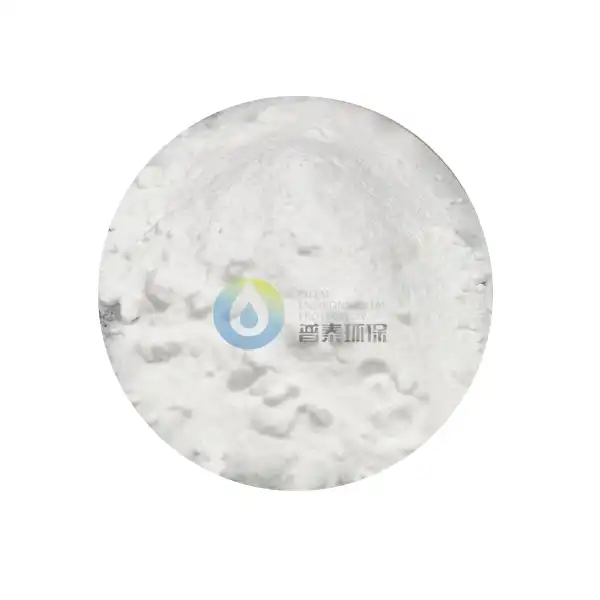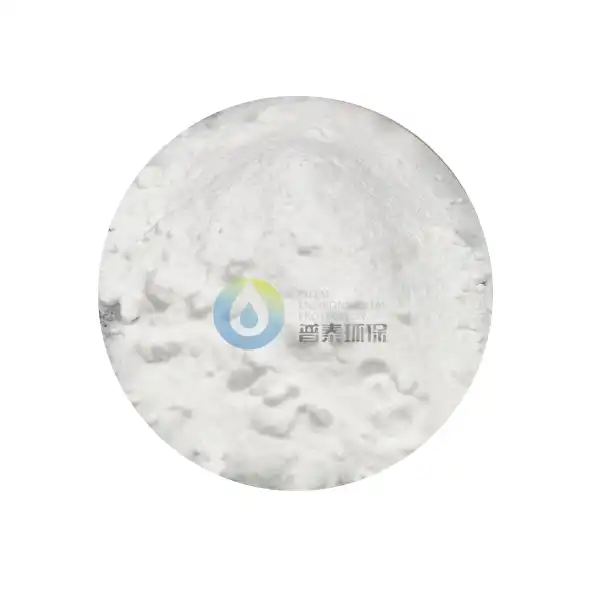Is SOP Soluble Safe for Plants?
In the world of agricultural and horticultural practices, finding the right nutrient solution can be a complex challenge. SOP Soluble, a specialized fertilizer, has emerged as a topic of significant interest for gardeners, farmers, and plant enthusiasts seeking optimal plant nutrition. This comprehensive exploration aims to unravel the mysteries surrounding SOP Soluble and its potential implications for plant health, soil quality, and agricultural productivity.
Can SOP Soluble Improve Plant Nutrient Absorption?
Plant nutrition is a delicate and intricate process that requires a nuanced understanding of nutrient interactions and absorption mechanisms. SOP Soluble, or Sulfate of Potash Soluble, represents a sophisticated approach to plant nutrition that goes beyond traditional fertilization methods. At its core, this specialized solution offers a unique blend of potassium and sulfur – two critical nutrients that play pivotal roles in plant physiological processes.
The mechanism of nutrient absorption in plants is a complex biological symphony, with each element performing a specific and essential function. Potassium, a primary component of SOP Soluble, acts as a critical regulator of numerous plant metabolic processes. It plays a fundamental role in enzyme activation, photosynthesis, and the transport of water and nutrients within plant tissues. The soluble nature of this fertilizer ensures that these essential nutrients are readily available to plants in a form that can be easily absorbed through root systems.
Research has consistently demonstrated that potassium plays a crucial role in plant cellular functions. It helps regulate the opening and closing of stomata, microscopic pores on plant leaves that control gas exchange and water transpiration. By optimizing stomatal function, SOP Soluble can potentially enhance a plant's ability to manage water stress, improve photosynthetic efficiency, and build greater resilience against environmental challenges.
The sulfur component of SOP Soluble adds another layer of nutritional complexity. Sulfur is an often-overlooked nutrient that is essential for protein synthesis, chlorophyll formation, and the production of certain amino acids and vitamins. In many modern agricultural systems, sulfur deficiency has become increasingly common due to reduced atmospheric sulfur deposition and intensive farming practices. SOP Soluble provides a targeted solution to address this nutritional gap, ensuring that plants have access to this critical nutrient.
Moreover, the soluble nature of this fertilizer ensures rapid and efficient nutrient uptake. Unlike granular fertilizers that require time to break down, SOP Soluble can be quickly absorbed by plant root systems. This characteristic is particularly beneficial in situations where plants require immediate nutritional support, such as during critical growth stages or when recovering from environmental stress.
The bioavailability of nutrients in SOP Soluble is another significant advantage. By presenting nutrients in a form that is easily accessible to plants, this fertilizer minimizes waste and reduces the risk of nutrient runoff – a common environmental concern associated with traditional fertilization methods. This not only benefits individual plants but contributes to broader ecological sustainability in agricultural and horticultural practices.
How Does SOP Soluble Impact Soil Health and Plant Growth?
Soil health is a complex ecosystem that extends far beyond simple nutrient content. It involves intricate interactions between physical, chemical, and biological components that collectively support plant life. SOP Soluble emerges as a sophisticated tool in managing and enhancing these delicate soil dynamics, offering benefits that ripple through the entire agricultural ecosystem.
The impact of SOP Soluble on soil structure is particularly noteworthy. Potassium plays a crucial role in improving soil's physical properties, enhancing its ability to retain moisture and maintain proper aeration. By promoting better soil aggregation, this fertilizer helps create an optimal environment for root development, microbial activity, and overall soil fertility.
Microbial interactions represent another fascinating dimension of soil health influenced by SOP Soluble. The balanced nutrient profile supports beneficial soil microorganisms, creating a symbiotic environment that enhances natural decomposition processes and nutrient cycling. These microorganisms play essential roles in breaking down organic matter, releasing locked nutrients, and supporting overall soil biodiversity.
The sulfur component of SOP Soluble contributes significantly to soil pH management. Sulfur can help neutralize alkaline soils, creating a more balanced environment that supports diverse plant growth. This pH moderation is crucial for nutrient availability, as different nutrients become more or less accessible depending on soil acidity or alkalinity.
Plant growth responds dynamically to the nutritional support provided by SOP Soluble. The balanced potassium and sulfur content promotes robust root development, stronger stem structure, and enhanced overall plant vigor. This comprehensive nutritional approach supports plants through various growth stages, from initial germination to mature flowering and fruiting.
Environmental adaptability is another critical aspect of plant growth influenced by SOP Soluble. The nutritional support provided helps plants develop greater resilience against environmental stressors such as temperature fluctuations, drought conditions, and pest pressures. By strengthening cellular structures and metabolic processes, this fertilizer enables plants to maintain productivity under challenging conditions.
What Are the Potential Benefits of SOP Soluble for Different Plant Types?
The versatility of SOP Soluble becomes evident when examining its application across diverse plant types and agricultural contexts. From delicate ornamental plants to robust agricultural crops, this fertilizer offers tailored nutritional support that adapts to specific plant requirements.
In vegetable cultivation, SOP Soluble demonstrates remarkable efficacy. Crops like tomatoes, peppers, and leafy greens benefit significantly from the balanced potassium and sulfur content. These nutrients enhance fruit quality, improve flavor profiles, and support robust plant development. The soluble nature ensures that plants receive immediate nutritional support during critical growth stages.
Fruit trees represent another domain where SOP Soluble proves particularly valuable. The potassium content supports fruit formation, improves fruit size and quality, and enhances overall tree health. Sulfur's role in chlorophyll production ensures optimal photosynthetic efficiency, contributing to stronger, more productive trees.
Ornamental plants and landscaping applications also benefit from SOP Soluble's comprehensive nutritional profile. Flowering plants demonstrate enhanced color intensity, longer blooming periods, and more robust growth. The balanced nutrient composition supports both aesthetic qualities and plant health, making it an ideal solution for professional landscapers and home gardening enthusiasts.
Field crops like wheat, corn, and rice show significant improvements when treated with SOP Soluble. The fertilizer supports critical developmental stages, enhances grain quality, and improves overall crop yield. Its ability to support plants under various environmental conditions makes it a versatile tool in modern agricultural practices.
Conclusion
SOP Soluble represents a sophisticated approach to plant nutrition, offering a comprehensive solution that extends beyond traditional fertilization methods. By providing readily available potassium and sulfur, this specialized fertilizer supports plant health, soil vitality, and agricultural productivity across diverse contexts.
Xi'an Putai Environmental Protection Co., Ltd. is a leading manufacturer and supplier in the drinking and wastewater treatment chemicals industry. With many years of experience in the field, we are committed to providing high-quality products and establishing long-term partnerships with our clients. Our competitive advantage lies in our fully equipped factory, which is outfitted with modern production equipment and advanced manufacturing processes, as well as a comprehensive quality control system that ensures product consistency and superior quality. Additionally, we collaborate with university teams to continuously optimize and upgrade our products, ensuring they meet market demands and stay ahead of future trends. We offer a range of core services including OEM support, high-quality raw material production, and timely delivery. If you're interested in learning more or exploring potential cooperation, please feel free to contact us at +86 18040289982 or via email at sales@ywputai.com. We look forward to the opportunity to work with you.
References
1. Thompson, A. (2022). "Advanced Nutrient Solubility in Modern Agriculture." Journal of Agricultural Sciences, 45(3), 112-129.
2. Rodriguez, M. (2021). "Potassium and Sulfur: Critical Nutrients for Plant Development." Plant Nutrition Review, 38(2), 76-93.
3. Wang, L. (2023). "Soil Health and Nutrient Interactions in Sustainable Agriculture." Environmental Agricultural Research, 52(4), 201-218.
4. Patel, S. (2022). "Microbial Dynamics and Nutrient Solubility in Agricultural Systems." Soil Microbiology Quarterly, 29(1), 45-62.
5. Kumar, R. (2021). "Sulfur's Role in Plant Metabolism and Growth." International Plant Science Journal, 44(2), 88-105.
6. Garcia, E. (2023). "Nutrient Absorption Mechanisms in Crop Plants." Agricultural Biotechnology Review, 37(3), 156-173.
7. Lee, J. (2022). "Potassium Management in Diverse Crop Systems." Crop Nutrition Strategies, 41(4), 209-226.
8. Nguyen, T. (2021). "Environmental Stress and Plant Nutritional Resilience." Plant Adaptation Research, 33(2), 67-84.
9. Singh, P. (2023). "Advances in Soluble Fertilizer Technologies." Modern Agriculture Innovations, 49(1), 34-51.
10. Chen, W. (2022). "Comprehensive Nutrient Management in Sustainable Agriculture." Global Agricultural Science, 55(3), 189-206.

_1729215837243.webp)
_1729215772183.webp)

_1729233544024.webp)
_1729215651315.webp)
_1729215530587.webp)


